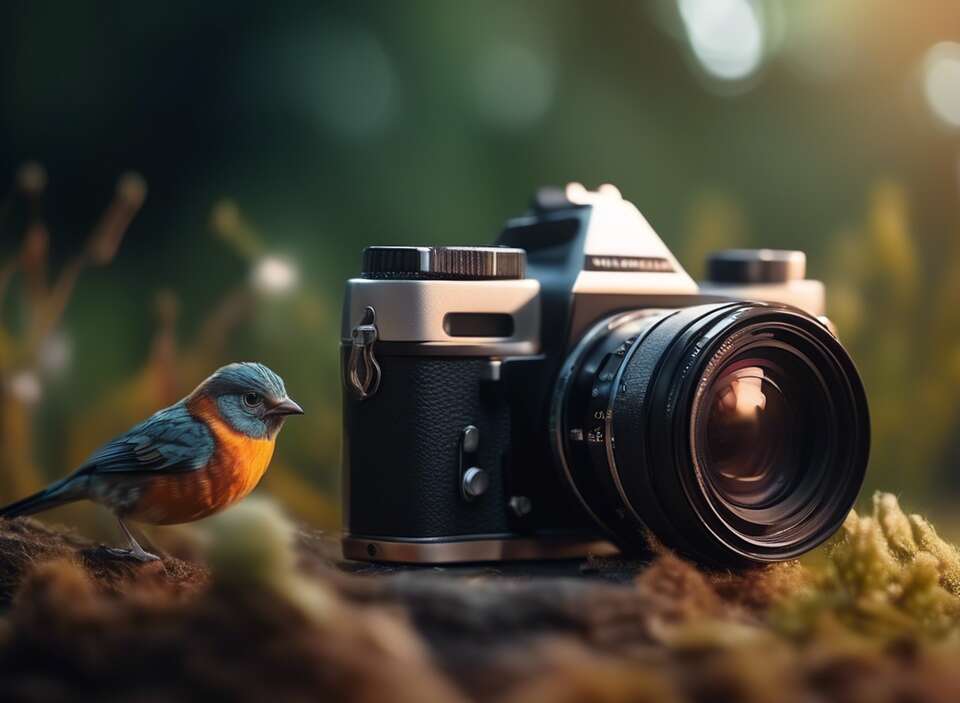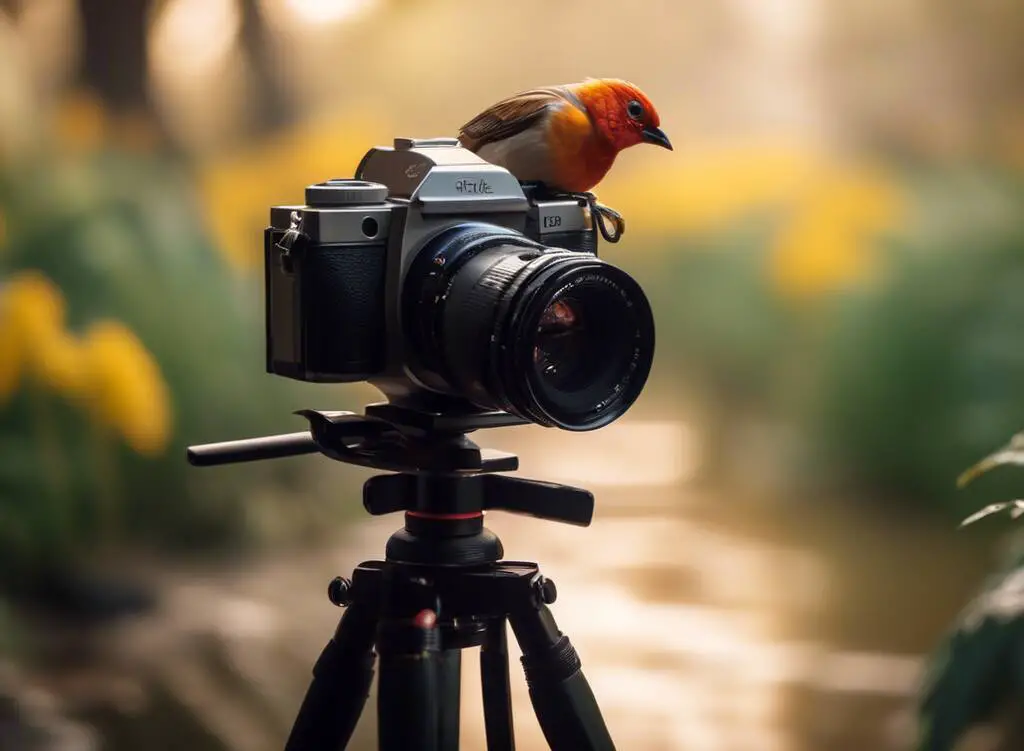
When it comes to capturing the beauty and grace of birds through photography, having the right camera is essential. Bird photography presents unique challenges due to the need for precision, speed, and clarity. To excel in this niche, photographers should carefully consider the features that best suit their requirements.
Table of Contents
Best Cameras for Bird Photography
Factors for Choosing a Bird Photography Camera
In the world of bird photography, there are several key factors to keep in mind when selecting a camera. One of the most critical aspects is the camera’s autofocus system. A fast and accurate autofocus is vital for capturing birds in motion and ensuring that the images are sharp and clear.
Another crucial consideration is the camera’s burst mode capabilities. Birds move quickly and unpredictably, so having a camera that can capture multiple frames per second is a significant advantage. This feature enables photographers to photograph birds in flight or other fast-paced scenarios effectively.
Recommended Cameras for Bird Photography
Canon EOS 7D Mark II: Known for its exceptional autofocus system and high-speed continuous shooting, the Canon EOS 7D Mark II is a popular choice among bird photographers. With its 65-point all cross-type AF system and up to 10 frames per second continuous shooting speed, this camera excels in capturing fast-moving subjects.
Explore the Canon EOS 7D Mark II on Amazon and capture stunning bird photography with its advanced autofocus and high-speed shooting capabilities!
Nikon D500: The Nikon D500 is another top contender for bird photography, thanks to its 153-point autofocus system and 10 frames per second continuous shooting speed. This camera’s DX-format sensor provides excellent image quality and low light performance, making it a versatile option for capturing birds in various environments.
Discover the Nikon D500 on Amazon, known for its 153-point autofocus and 10 frames per second shooting speed. Ideal for capturing birds with exceptional image quality in any environment!
Sony Alpha a9 II: For bird photographers looking for mirrorless options, the Sony Alpha a9 II is a standout choice. With its advanced autofocus system, including 693 phase-detection AF points, this camera offers speed and accuracy ideal for bird photography. The a9 II also boasts blackout-free shooting and impressive image stabilization features.
Explore the Sony Alpha a9 II on Amazon—a top mirrorless choice for bird photography, featuring 693 phase-detection AF points and blackout-free shooting for precise, stabilized captures.
Additional Considerations
In addition to the camera body, choosing the right lens is crucial for bird photography. A telephoto lens with a long focal length, such as 300mm or 400mm, is typically preferred for capturing birds from a distance without disturbing them. Investing in quality lenses with image stabilization can further enhance the sharpness of bird images.
Furthermore, accessories like tripod stands, remote shutter releases, and camouflage gear can aid in achieving stunning bird photographs without causing disruptions to their natural behavior. It’s essential to prioritize the welfare of the birds and respect their habitats while pursuing this art form.
Selecting the best camera for bird photography is a personalized decision that depends on individual preferences, shooting style, and budget. By considering factors like autofocus speed, continuous shooting capabilities, and lens compatibility, photographers can find a camera that meets their specific needs in capturing the beauty of avian life. Remember, practice and patience are key to mastering bird photography, so get out there, explore different settings, and let your creativity soar.

Tips for Capturing Stunning Bird Photos: Techniques and Equipment Suggestions
Bird photography is a challenging yet highly rewarding niche in the world of wildlife photography. Capturing stunning images of birds in their natural habitats requires not only skill and patience but also the right equipment. In this article, we will explore some tips and techniques for taking impressive bird photos, as well as the essential camera gear needed for successful bird photography.
Tips for Capturing Stunning Bird Photos
When it comes to bird photography, preparation and practice are key. Here are some tips to help you take your bird photos to the next level:
- Research and Location Scouting: Before heading out to photograph birds, do some research on the species you want to capture. Understanding their behavior and habitats will increase your chances of getting great shots. Visit local parks, nature reserves, or bird sanctuaries known for bird sightings.
- Patience and Persistence: Birds can be elusive and unpredictable subjects. Be prepared to spend time waiting for the perfect moment to capture a bird in action. Patience is crucial in bird photography, so don’t get discouraged if you don’t get the shot you want right away.
- Use Natural Light: Lighting is essential in photography, and natural light is often the best choice for capturing birds. Early morning and late afternoon provide soft, warm light that enhances the colors and details of the birds. Avoid harsh midday sun, which can create shadows and overexposure.
- Understanding Camera Settings: Familiarize yourself with your camera settings, especially aperture, shutter speed, and ISO. In bird photography, a fast shutter speed is crucial to freeze the birds’ motion. Use a wide aperture to create a blurry background (bokeh) that makes the bird stand out.
Essential Camera Gear for Bird Photography
Choosing the right camera and lenses is critical for capturing sharp and detailed bird photos. Here are some essential pieces of equipment for bird photography:
- Camera Body: When selecting a camera for bird photography, look for a model with fast autofocus capabilities and a high frames-per-second (FPS) rate. Crop sensor cameras are popular among bird photographers for their additional reach.
- Telephoto Lens: A telephoto lens with a focal length of at least 300mm is essential for bird photography. Lenses with longer focal lengths, such as 400mm or 500mm, allow you to capture birds from a distance without disturbing them.
- Tripod or Monopod: While not always necessary, a sturdy tripod or monopod can be beneficial for supporting heavy camera gear and maintaining stability, especially when using long telephoto lenses.
- Camera Bag: Invest in a durable and comfortable camera bag to carry your gear during bird photography outings. Look for a bag with padded compartments to protect your equipment from bumps and scratches.
Bird photography requires a combination of skill, patience, and the right equipment. By following these tips and investing in essential camera gear, you can improve your bird photography skills and capture stunning images of these beautiful creatures in their natural habitats.
Conclusion
In today’s dynamic world of bird photography, having the right camera can make all the difference in capturing stunning and breathtaking images of our avian friends. By understanding the features and recommendations of the best cameras for bird photography, enthusiasts can elevate their skills and produce high-quality photographs. From the Nikon D500’s speed and precision to the Sony A9’s exceptional autofocus capabilities, there are a plethora of options available to suit varying preferences and budgets.
Equipped with the knowledge of different camera features, bird photographers can explore a range of tips and techniques to enhance their craft further. By understanding the significance of factors such as lighting, composition, and patience, photographers can elevate their images to the next level. Moreover, investing in the right equipment, such as telephoto lenses and tripods, can significantly impact the sharpness and clarity of bird photographs, allowing enthusiasts to capture intricate details with ease.
Taking the time to scout locations, understand bird behavior, and practice different shooting modes can also contribute to the success of bird photography endeavors. By immersing oneself in the natural world and observing the unique characteristics of each bird species, photographers can anticipate movements and behaviors, resulting in more compelling and dynamic images. Additionally, experimenting with different techniques, such as panning shots or capturing birds in flight, can add a creative and captivating dimension to one’s portfolio.
As technology continues to advance, the world of bird photography evolves, offering new opportunities and challenges for photographers. By staying informed about the latest camera releases, accessories, and editing software, enthusiasts can adapt to changing trends and enhance their photography skills effectively. Utilizing social media platforms and online communities can also provide valuable feedback and inspiration, fostering growth and creativity within the bird photography community.
Bird photography is a rewarding and fulfilling pursuit that requires dedication, passion, and the right tools. By investing in the best cameras for bird photography and incorporating tips and techniques to capture stunning bird photos, enthusiasts can unleash their creativity and produce images that resonate with viewers. Whether photographing birds in their natural habitats or exploring new perspectives and styles, the journey of bird photography is as enriching as the images captured along the way.
Embrace the wonders of the avian world through your lens, and let your passion for bird photography soar to new heights.


